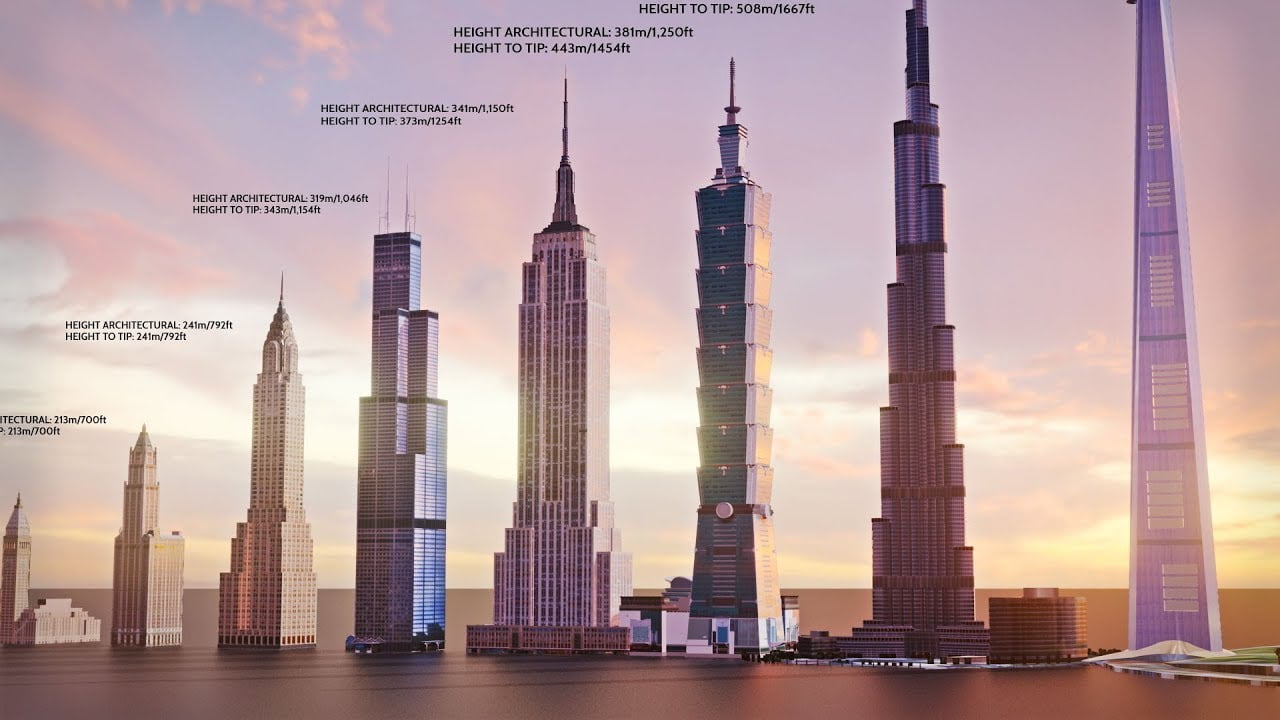 For centuries, countries have constructed buildings and structures as a way to signal their wealth and prosperity. Even back in the time of the Ancient Greeks and Romans, buildings were used as a status symbol—often to establish empirical might over conquered nations and to show a sign of dominance and ambition. From the Colossus of Rhodes to the Temple of Artemis and the Mausoleum at Halicarnassus, these huge constructions would soon become so famous they would be counted among the seven original wonders of the world.
For centuries, countries have constructed buildings and structures as a way to signal their wealth and prosperity. Even back in the time of the Ancient Greeks and Romans, buildings were used as a status symbol—often to establish empirical might over conquered nations and to show a sign of dominance and ambition. From the Colossus of Rhodes to the Temple of Artemis and the Mausoleum at Halicarnassus, these huge constructions would soon become so famous they would be counted among the seven original wonders of the world.
While the world may have moved on considerably in terms of technology and a refusal to accept colonization, today, countries still demonstrate their potency with the buildings they construct. Indeed, there is even a new list for the seven wonders which includes the Taj Mahal and the Christ the Redeemer statue in Rio de Janeiro. It seems people just can’t get enough of impressive architecture.
While once the intricacy of a structure mattered, now it’s all about height
As nations continue to compete against one another globally to promote their wealth and technological competence, these days there is a growing competition to build higher and higher. In ancient times, intricacy mattered as much as height, but in the modern age, it’s all about elevation.
These massive structures only became feasible following the invention of the elevator. Elevators made it possible for construction companies to reach up to the skies, without having to worry about the practicalities of people having to climb stairs. Indeed, it could be argued that the elevator even changed our skylines, making the construction of skyscrapers possible from the mid-1800s.
The invention of the elevator also had a profound socio-economic impact, literally flipping our cities upside down and putting the most desirable accommodation at the top—rather than at the bottom—of buildings. Before the elevator, the best apartments were considered to be at ground level (to save climbing stairs); but the elevator changed all that, giving rise to luxury penthouses at the top of buildings—in cleaner air and with better light and views. Of course, regular maintenance and remedial work are required, such as ATIS elevator inspections, so as to reduce the risk of accidents failures, but the humble elevator still revolutionized our cities and made building higher a realistic aim.
An age of American dominance comes to an end
For many years, America solidified its global dominance, charging ahead with the mass construction of skyscrapers and some of the tallest buildings in the world. From 1931 until 1972, the towering Empire State Building stood top of the list at an impressive 1,454 feet (slightly over 443 meters). However, technology and building techniques have moved on considerably since then, and this once-great behemoth now doesn’t even make the top 40 tallest buildings in the world. These days, America only features one building in the top ten—the One World Trade Center in New York City (currently ranked 6th tallest in the world). Completed in 2014, this 94-floor building sits at 1,776 feet—a little over 540m in height.
The top-five tallest buildings in the world
As the power seems to have shifted away from America, emerging nations have joined the race for the tallest building. There is little doubt that owning this crown gives a perceived impression of wealth and technical expertise so, in today’s rapidly changing economic climate, it’s almost fitting that the tallest buildings are appearing outside the US. In ascending order, the world’s tallest buildings today are:
Lotte World Tower: With 123 floors and standing at 1,819 feet (554m), the Lotte World Tower—located in Seoul, South Korea—comes in at fifth in terms of the world’s tallest buildings.
Ping An Finance Center: Completed in 2017, and standing at 1965 feet (598m) the Ping An Finance Center in Shenzhen, China lies in fourth.
Makkah Royal Clock Tower: Built in 2012, featuring 120 floors, and standing at 1,972 feet (601m), the Makkah Royal Clock Tower in Mecca, Saudi Arabia, lies in third.
Shanghai Tower: No prizes for guessing where this is. At 2,073 feet (631m) and built in 2015, the Shanghai Tower sits in second, quite a good way behind…
The Burj Khalifa: Dubai’s ambition has no limits it seems, and this wealthy state is the proud owner of the world’s tallest building—the world-renowned Burj Khalifa. With 163 floors and standing at 2,716 feet (almost 828m), this impressive building is literally head and shoulders above anything else in the world right now.








Great article. Refreshed my memories when I was young and wanted be an construction engineer. Thanks for that.